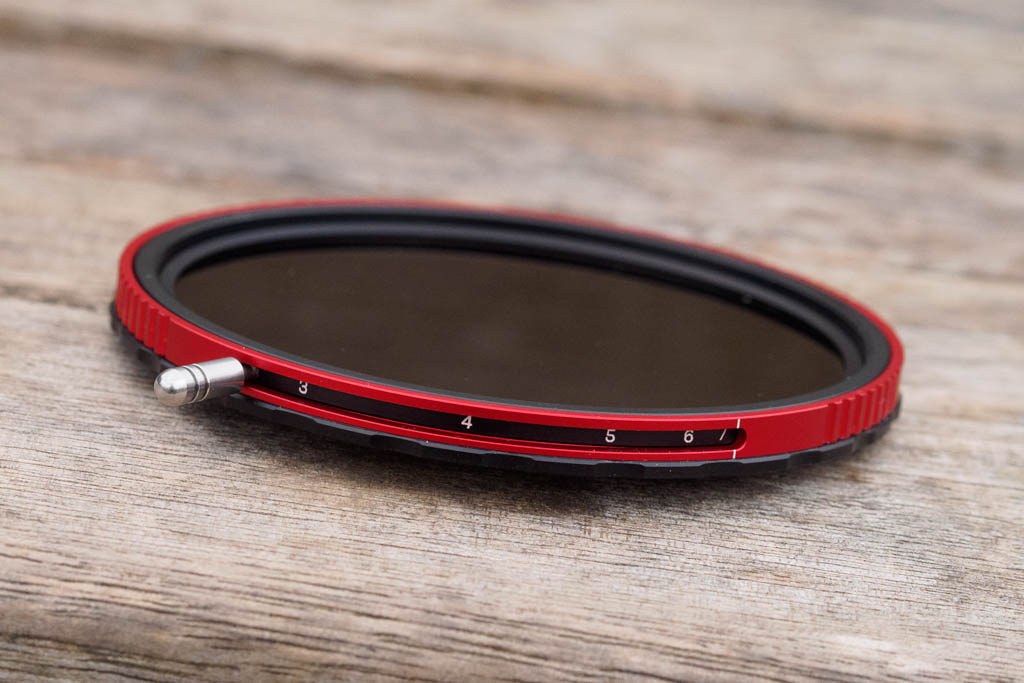Amateur Photographer verdict
This filter combines two useful functions while offering excellent value for money. Optically it’s excellent, with no image degradation on high-resolution sensors. However, operation can be awkward.- True Circular Polariser
- Slim Design
- Good Value
- Fairly niche use for photographers
- Slightly confusing operation
No one likes stacking filters together – it is fiddly and can reduce image quality. Helping to minimise that problem is the Chinese company Haida. Its Haida PRO II MC CPL-VND 3-7 stops combines a circular polariser with a variable neutral density filter. This is a combination that may well appeal to landscape photographers, although it is perhaps more likely to find itself in the hands of videographers.
Haida PRO II MC CPL-VND 3-7 stops 2-in-1 filter at a glance:
- $84 – $109 / £59.40 – £83
- Circular Polarisers
- 3-7EV neutral density filter
- 67mm, 72mm, 77mm and 82mm versions
- Eight layers of coating to reduce flare and repel oil and water
- 48g
- haidaphoto.com
Variable ND filters allow filmmakers to adjust the shutter speed without changing the aperture or sensitivity. They work by rotating one polarising filter relative to another, but don’t usually offer direct control over the polarisation effect. Haida’s approach allows users to adjust both the polarisation and the exposure in one unit.
Haida PRO II MC CPL-VND filter key features:
- Thread: The filter comes in 67, 72, 77 and 82mm fittings. However, the front thread is one size bigger; for example, the 67mm filter has a 72mm thread on the front.
- Thumb Control: A raised thumb stick is used to control the ND part of the filter – this should be set first
- Red Ring: Turning the red ring controls the circular polariser element
- Range: Neutral density can be adjusted from 3 to 7 stops, with markings at whole-stop intervals
This filter feels exceptionally well-made, with two revolving parts. First, an inner ring controls the ND strength, with a handy thumb stick enabling precise and easy-to-find rotation. Usefully, there are markings to show the positions of the 3-7EV stops of density available. Then the stylish-looking red aluminium outer ring is used to set the polarisation. Both rings operate very smoothly.

In practice, it turns out that the ND control rotates the front part of the filter, so adjusting it also affects the polarisation. As a result, it took a few goes to adapt to which part I needed to turn. It’s generally best to set your required density first.
Using the polariser, I could reduce reflections with no discernible shift in colour, other than the usual increase in saturation. The neutral density filter is restricted from being fully rotated, which presumably is why I could not see the ‘X’ effect that can occur when variable ND filters are pushed to the limit. The marked ND exposure value reductions are accurate enough to be used for making calculations for long-exposure landscape shots.

Most importantly, there is no discernible reduction in image sharpness even when used on a 60MP camera. Impressively, the filter also gave no vignetting with lenses as wide as 15mm.
Haida PRO II MC CPL-VND filter: Our Verdict
For filmmakers who use polariser and variable ND filters, the Haida CPL-VND PRO II filter is a worthy addition to a kitbag, being well-made and producing great results. For photographers, it is a bit more of a niche product, but it may be helpful for those shooting long exposures. For either, it represents excellent value for money.

Follow AP on Facebook, Twitter, Instagram, YouTube and TikTok.






